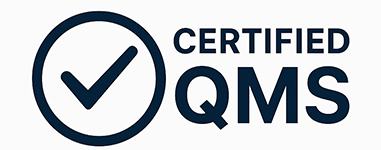
What is coil-reinforced tubing?
The addition of spiral reinforcement, or coiling, to cannula tubes increases kink and crush resistance. High-angled coils (almost perpendicular to the longitudinal axis of the tube) provide the most improvement in kink and crush resistance.
What options does Putnam Plastics have for reinforced cannula tubing?
- Flat wires for a lower tubing profile and rounded wires for higher tensile strength.
- Ribbon wires
- Single or multi-filament (multiple filaments add to buckling resistance)
- Layering of coils (increased strength for deflection)
- Variable gap distance between spirals
- Ability to change winding direction
- Diverse wire tempers
Why would you choose a coiling extrusion?
Coil-reinforced tubing has increased torqueability, maintains flexibility and maneuverability (important for navigating the body’s tortuous pathways), and is resistant to collapsing or buckling.
What materials is the coiling typically comprised of and why?
Putnam offers stainless steel, nitinol (nickel titanium) and copper reinforcements that are incorporated into extruded tubing ranging from 0.010 to 0.450 inches (0.025 to 1.143 cm) in diameter.
What are the limitations of coil-reinforced tubing?
High-angled spiral designs do not transmit torque, nor do they restrict longitudinal movement of the tube, which are desirable features in many types of medical catheters. However, a linear wire reinforcement can be added to limit longitudinal movement.
What range of WPI (wraps per inch) does Putnam offer for coiling reinforcement?
Reinforcing coils can transition from complete coverage up to 5 wraps/inch (1.97 wraps/cm).
What other technologies can be melded with reinforced coiling?
Our variable coiling technology provides optimal flexibility at the distal tip, strength at the proximal end, and kink resistance where it’s needed most. Other Putnam options you might consider adding to reinforced coiling:
- Specialty liners
- Longitudinal fiber to minimize stretch
- Variable durometer outer layers
- Multiple discrete wiring (up to 8 discrete wires).
- What medical procedures is this commonly used in?
A diverse field of procedures can benefit from coiled extrusion technology. Intravascular catheters, for example, may use spiral reinforcement so that tubing can make tight bends through the vascular system without kinking or collapsing.
Putnam’s engineers can help you find the best extrusion—no matter which medical device tubing component you produce.
What ISO certifications is Putnam equipped to comply with?
Our ISO 13485:2016 certified custom tubing manufacturing center with an ISO-compliant clean room meets the growing demand for stringent regulatory controls of medical devices.

Why is Putnam Plastics the best choice for coil-reinforced tubing?
- Putnam’s continuous layering processing offers precision tubing with tight tolerances—without the added cost that handwork adds.
- Putnam’s coiling machines can change wraps per inch during operation to create tubing with different coiling flexibility between the proximal and distal sections of a shaft without the expense or risk of a molded joint. Visit our Variable Braid & Coil page for more information.
- As a leader in advanced extrusion for minimally invasive medical devices and with over 40 years of experience, Putnam has some of the best engineering minds in the plastics business ready to custom design tubing for your specific application. To discuss how to get optimal results with your coiled medical tubing, click below and talk with a Putnam engineer or sales representative.
